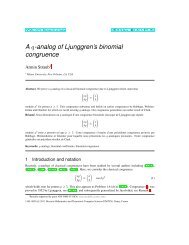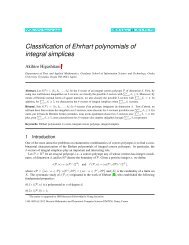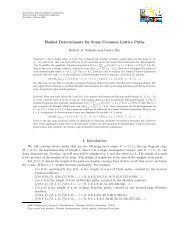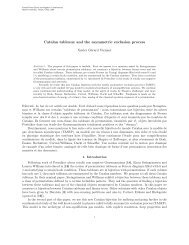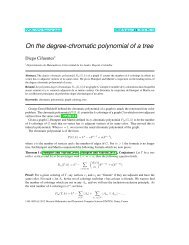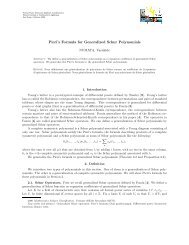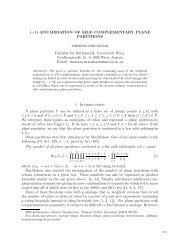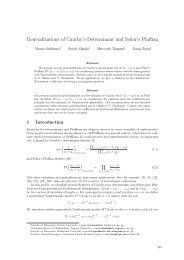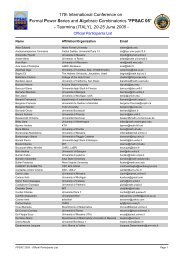Euler's partition theorem and the combinatorics of -sequences
Euler's partition theorem and the combinatorics of -sequences
Euler's partition theorem and the combinatorics of -sequences
You also want an ePaper? Increase the reach of your titles
YUMPU automatically turns print PDFs into web optimized ePapers that Google loves.
Question: Can we enumerate ei<strong>the</strong>r <strong>of</strong> <strong>the</strong>se finite sets:<br />
◮ The integer <strong>sequences</strong> λ 1 , . . . , λ n in which <strong>the</strong> ratio <strong>of</strong><br />
consecutive parts is greater than c l <strong>and</strong> λ 1 < a (l)<br />
n+1 ?<br />
We have a combinatorial characterization: <strong>the</strong>se can be<br />
viewed as fillings <strong>of</strong> a staircase <strong>of</strong> shape (n, n − 1, . . . , 1) such<br />
that (i) <strong>the</strong> filling <strong>of</strong> each row is an l-ary string with no<br />
(l − 1)(l − 2) ∗ (l − 1) <strong>and</strong> (ii) <strong>the</strong> rows are weakly decreasing,<br />
lexicographically. For l = 2 <strong>the</strong> answer is 2 n .<br />
◮ The integer <strong>sequences</strong> λ 1 , . . . , λ n satisfying<br />
1 ≥ λ 1<br />
a n<br />
≥ λ 2<br />
a n−1<br />
≥ . . . ≥ λ n−1<br />
a 2<br />
≥ λ n<br />
a 1<br />
≥ 0<br />
For l = 2 this is <strong>the</strong> same set as above <strong>and</strong> <strong>the</strong> answer is 2 n .



